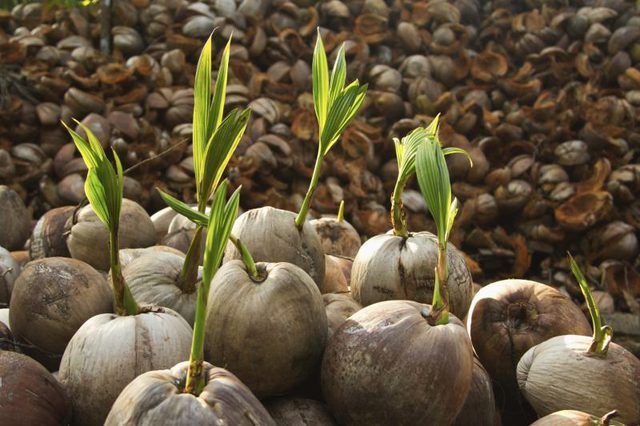Bulbs
Flower Basics
Flower Beds & Specialty Gardens
Flower Garden
Garden Furniture
Garden Gnomes
Garden Seeds
Garden Sheds
Garden Statues
Garden Tools & Supplies
Gardening Basics
Green & Organic
Groundcovers & Vines
Growing Annuals
Growing Basil
Growing Beans
Growing Berries
Growing Blueberries
Growing Cactus
Growing Corn
Growing Cotton
Growing Edibles
Growing Flowers
Growing Garlic
Growing Grapes
Growing Grass
Growing Herbs
Growing Jasmine
Growing Mint
Growing Mushrooms
Orchids
Growing Peanuts
Growing Perennials
Growing Plants
Growing Rosemary
Growing Roses
Growing Strawberries
Growing Sunflowers
Growing Thyme
Growing Tomatoes
Growing Tulips
Growing Vegetables
Herb Basics
Herb Garden
Indoor Growing
Landscaping Basics
Landscaping Patios
Landscaping Plants
Landscaping Shrubs
Landscaping Trees
Landscaping Walks & Pathways
Lawn Basics
Lawn Maintenance
Lawn Mowers
Lawn Ornaments
Lawn Planting
Lawn Tools
Outdoor Growing
Overall Landscape Planning
Pests, Weeds & Problems
Plant Basics
Rock Garden
Rose Garden
Shrubs
Soil
Specialty Gardens
Trees
Vegetable Garden
Yard Maintenance
How to Grow a Coconut From Seed
How to Grow a Coconut From Seed. All you need to grow a coconut (Cocos nucifera) from seed are heat, humidity and a fresh, ripe coconut. While it will be a few years before you harvest coconuts, the planting and growing process take only minimal effort. Unless you have a large greenhouse that stays warm and humid, growing a coconut tree to...

All you need to grow a coconut (Cocos nucifera) from seed are heat, humidity and a fresh, ripe coconut. While it will be a few years before you harvest coconuts, the planting and growing process take only minimal effort. Unless you have a large greenhouse that stays warm and humid, growing a coconut tree to maturity is best suited for the frost-free tropical and subtropical climates of U.S. Department of Agriculture plant hardiness zones 10 through 11.
Know Your Nut
Select a mature coconut for planting, ideally one that has fallen naturally from the tree. Coconuts from the store are often de-husked, but for planting you want one with the husk intact. The coconuts should be 15 by 12 inches long, with a slightly oblong shape. For successful germination, select one that has water inside -- you can tell by giving it a gentle shake near your ear and listening for the liquid.
Prepping the Coconut
Fill a large bucket with water and submerge the coconut for 48 to 72 hours. Soaking the coconut helps stimulate germination. In their native habitat, coconuts germinate during the wet season when temperatures are high. Pick a wide, shallow container that has drainage holes in the bottom. A 10-inch-deep, 20-inch-wide container works well, but larger is fine if that's what you have available. Fill the pot with standard potting soil and then make a well or indentation in the center.
Two Ways to Plant
You have two choices when it comes to planting a coconut: upright or horizontal. For the horizontal method, lay the coconut in the soil well, on its side, and push the soil back around, leaving one-half of the coconut sticking out of the soil. For the upright method, hold the nut in your hand. You'll see a pointed end and a flat end. The flat end has a rough nub where the stem detached when the coconut fell. Stick the bottom of the coconut into the center of the pot with this flat, nubby side sticking up and push the potting soil around the base of the coconut, leaving the top one-half out of the soil.
Hot, Humid and Wet
Coconuts need sun, warmth and moisture to germinate. Keep the temperature above 70 degrees Fahrenheit and ideally between 90 and 100 F. Unless you live in the tropics, plan to germinate the coconut in a greenhouse or hot, sunny porch. Keep the soil wet -- but not soggy -- by watering when the top of the potting mix starts to feel dry. In hot weather, especially in clay pots, you may need to water daily. Look for a small shoot in two to three months.
Time to Maturity
Grow the coconut in full sun -- either in a container or outdoors -- and keep the temperature above 72 F. Water outdoor coconut trees with 1 inch of water each week. Water container-grown coconut trees when the top 1 inch of the soil dries out. You can expect your first coconuts within six years, though it could take up to 10 years from the time the tree sprouts. Cut the coconut from the tree when the outer husk turns brown or let it mature and fall naturally, as long as the falling coconuts don't pose a danger to people or property.